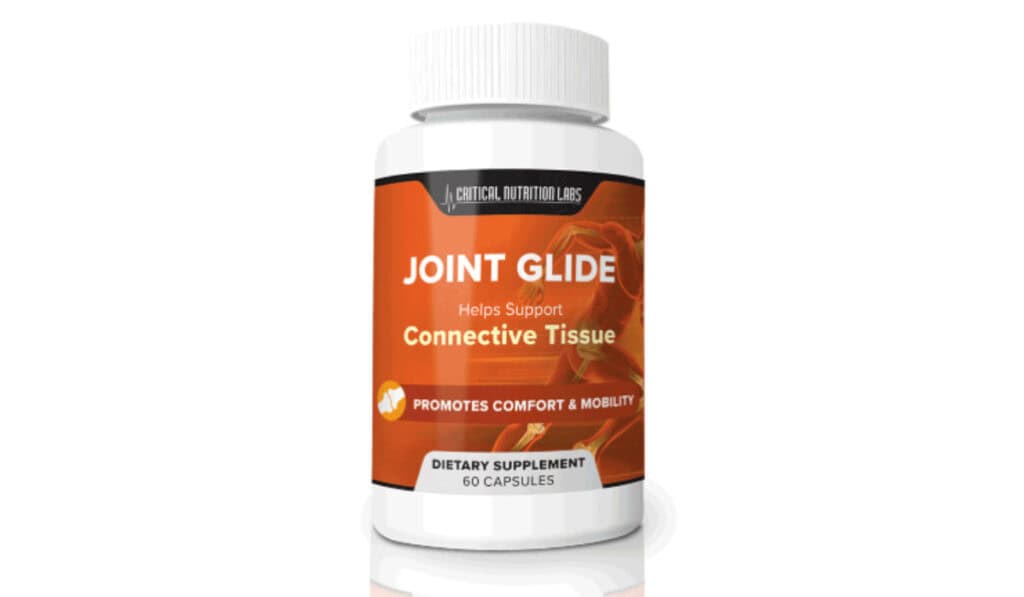Enhance Your Fitness Safely
Starting a fitness journey is exciting, but it’s vital to proceed in a way that minimizes the risk of exercise injuries. Every step, jump, or lift has the potential to stress your joints, and without proper care, this stress can lead to injury. However, you can take steps to protect your joints and ensure that you can keep moving towards your fitness goals without unnecessary pain or setbacks. In this guide, we’ll explore the top strategies to keep your joints healthy and injury-free during exercise and daily activities, allowing you to enjoy a lifelong journey of fitness and well-being.
Joint health is foundational to maintaining an active lifestyle. Whether you’re a seasoned athlete or just starting out, understanding how to care for your joints can make a significant difference in your overall fitness experience. By adopting strategies that protect your joints, you’ll not only reduce the risk of injury but also enhance your performance and enjoyment of physical activities. Let’s dive into the essential steps you can take to safeguard your joints and elevate your fitness safely.
Introduction: Emphasizing the Importance of Joint Health in Fitness
Joint pain can significantly hinder your fitness progress and overall quality of life. It’s a common issue that many face, yet it’s often preventable with the right precautions. Prioritizing joint health is essential for anyone looking to engage in physical activity, whether it’s high-intensity workouts or daily movements. Understanding and implementing strategies to protect your joints can lead to a more enjoyable and sustainable fitness journey.
1. Embrace Warm-Up and Cool-Down Routines
Beginning and ending your workout with proper routines can greatly reduce the risk of joint injuries. Warm-ups prepare your body for physical activity, increasing blood flow to your muscles and reducing the chance of blood pooling, which can lead to stiffness and discomfort. Similarly, cool-downs help your body transition back to a resting state, reducing the risk of blood pooling and aiding in the recovery process.
The Critical Role of Dynamic Warm-Ups
Dynamic warm-ups involve movement-based stretching that prepares your body for the physical activity ahead. These exercises increase your heart rate and blood flow, warming up your muscles and joints, and reducing the risk of blood pooling. Incorporating dynamic warm-ups into your routine is a proactive step towards preventing joint injuries and enhancing your overall workout performance.
Effective Cool-Down Techniques for Injury Prevention
Effective cool-downs incorporate gentle stretching and staying hydrated to prevent muscle cramps and optimize muscle function. These techniques also play a crucial role in minimizing sports-related injuries by allowing your body to gradually return to its normal state. Paying attention to hydration and engaging in light activities as part of your cool-down can significantly reduce discomfort and enhance recovery.
2. Incorporate Stretching into Your Daily Regimen
Including both dynamic and static stretching in your daily routine prepares your body for physical activity and aids in recovery, respectively. Dynamic stretching helps warm up your body, reducing muscle soreness and the risk of injuries during workouts. Static stretching, on the other hand, is crucial after exercising as it helps in muscle recovery and reduces soreness.
Dynamic Stretching Before Exercising
Dynamic stretching before workouts prepares your body for physical exertion by simulating the movements you’ll be performing. This form of stretching not only warms up the muscles but also reduces muscle soreness and the risk of injuries. By incorporating dynamic stretches into your pre-workout routine, you’re effectively preparing your body for the demands of your upcoming activity.
Static Stretching Post-Exercise: A Necessity, Not an Option
After exercising, static stretching is essential for cooling down your body and aiding in recovery. This type of stretching involves holding a stretch for a longer period, which helps to lengthen and relax your muscles after they’ve been contracted during exercise. Integrating static stretching into your post-workout routine is a crucial step in preventing stiffness and enhancing flexibility.
3. Prioritize Proper Nutrition for Joint Health
Proper nutrition plays a pivotal role in supporting joint health and reducing the risk of injuries. A balanced diet rich in vitamins and minerals can strengthen muscles and bones, thereby reducing the risk of joint discomfort. By focusing on nutrient-dense foods, you’re not only fueling your body for physical activities but also supporting long-term joint health.
Key Nutrients That Support Joint Health
Joint pain can be alleviated through a diet rich in anti-inflammatory foods and essential nutrients. Omega-3 fatty acids, found in fish and flaxseed, and antioxidants present in fruits and vegetables, can significantly reduce joint pain and inflammation. Incorporating these key nutrients into your diet supports overall joint health and can enhance your fitness journey.
Hydration: Its Impact on Joint and Muscle Function
Maintaining adequate hydration is crucial for joint and muscle function. Water helps to keep the joints lubricated, reducing friction and the risk of joint pain. It also plays a significant role in transporting nutrients to your muscles, aiding in recovery and performance. Ensuring you’re properly hydrated before, during, and after exercise is a simple yet effective way to support your joint health.
4. Gradually Increase Exercise Intensity
Gradually increasing the intensity of your workouts allows your body to adapt without placing undue stress on your joints. Starting slow and progressively challenging yourself helps minimize the risk of injury and ensures a sustainable fitness journey. Balancing dynamic and static stretching as part of this gradual progression further aids in preparing your body and recovering properly.
Understanding Your Body’s Limits
Recognizing and respecting your body’s limits is crucial in preventing overuse injuries. Paying attention to how your body feels and responding appropriately to signs of fatigue or discomfort can help you avoid pushing yourself too hard and risking injury.
The Dangers of Overtraining and How to Avoid Them
Overtraining can lead to a host of issues, including overuse injuries, stress fractures, and plantar fasciitis. Listening to your body and allowing adequate time for rest and recovery is essential. Incorporating rest days into your routine and being mindful not to push your body beyond its limits are key strategies in avoiding the negative impacts of overtraining.
5. Wear Appropriate Protective Gear
Using proper gear is crucial in preventing joint injuries during exercise and sports activities. Protective equipment like knee pads, wrist guards, and appropriate footwear can absorb impact and reduce stress on your joints. Selecting gear that is suited to your specific activity can go a long way in keeping your joints safe and healthy.
The Importance of Footwear in Preventing Joint Injuries
Choosing the right footwear is crucial in keeping your joints safe. Running shoes, for instance, are designed to absorb the impact that comes from hitting the ground, protecting your knees, ankles, and feet from injury. But it’s not just about having any pair of athletic shoes; it’s about shoes that fit properly. A good fit ensures that your feet are supported in all the right places, reducing the risk of joint injuries significantly. So, next time you’re shoe shopping, remember that the right pair can do wonders for your joint health.
Selecting the Right Gear for Your Sport or Activity
Engaging in any sport or physical activity requires the right protective gear. This is especially true for young athletes, who are still growing and are more vulnerable to injuries. Proper gear, such as knee pads or wrist guards, can offer additional support and protection to areas that are susceptible to injury. Moreover, specific activities require specific types of protective gear. For example, wearing the appropriate type of running shoes for your foot type can prevent a multitude of injuries. Taking the time to select the proper protective gear tailored to your activity can safeguard your joints and enhance your overall performance.
6. Ensure Adequate Strength Training
Strength training is not just about building muscle; it’s about protecting your joints. Sports medicine experts agree that exercises that target the muscles around your joints can help stabilize and protect those joints. This is especially important for areas of the body that are prone to injury, such as the knees and shoulders. By incorporating strength training into your routine, you are essentially building a protective barrier around your joints, ensuring they are better equipped to handle the stresses of daily activities and exercise.
Strengthening Exercises to Support Joints
To minimize the risk of joint injury, it’s vital to focus on strengthening exercises that target the muscles surrounding your joints. Such exercises not only improve stability but also enhance the overall function of your joints. By strengthening these key areas, you can create a supportive environment for your joints, significantly decreasing the likelihood of injuries. Remember, a strong body is one that’s less prone to joint injuries, making strength training an essential component of your fitness regimen.
Balancing Strength Training with Flexibility Exercises
Sports medicine experts often emphasize the importance of balancing strength training with flexibility exercises. This balance is crucial for maintaining joint health and preventing injuries. Flexibility exercises that target the muscles around the joints can improve range of motion and reduce stiffness, complementing the benefits gained from strength training. Together, these practices ensure that your joints are not only strong but also flexible and able to move freely without pain, offering the best defense against joint injuries.
7. Practice Proper Exercise Techniques
Using correct form during physical activities is essential to prevent injuries. Whether you’re lifting weights, running, or engaging in any form of exercise, proper technique is key. Not only does this ensure that you’re effectively working the right muscles, but it also protects your joints from unnecessary stress. If you’re unsure about your form, consulting a personal trainer can provide you with the guidance needed to exercise correctly, reducing your risk of injury.
The Role of Professional Guidance in Learning Proper Form
A personal trainer can be invaluable in preventing sports injuries. They possess the knowledge to teach you the correct way to perform exercises, especially when it comes to lifting weights or engaging in complex movements. A lack of proper form can lead to serious injuries, making professional guidance crucial. Personal trainers can correct your posture, adjust your movements, and tailor exercises to your body’s needs, ensuring you exercise correctly and safely.
Common Mistakes and How to Correct Them
When engaging in physical activities, it’s common to encounter issues like knee injuries, Achilles tendon discomfort, or pain along the shin bone. These are often the result of incorrect exercise techniques or overexertion. To correct these issues, focus on maintaining proper alignment during exercises, avoid overstraining, and gradually increase the intensity of your workouts. Recognizing these common mistakes and knowing how to correct them can significantly reduce your risk of injury.
8. Recognize the Value of Rest and Recovery
Rest and recovery are as important as the exercise itself. Engaging with a physical therapist or incorporating physical therapy techniques into your routine can significantly aid in muscle recovery and injury prevention. These professionals can provide targeted exercises and recovery strategies that cater specifically to your body’s needs, ensuring that you’re giving your muscles and joints the care they need to repair and strengthen.
The Science Behind Rest Days
Rest days are essential for preventing sports injuries and are crucial for overall health. Allowing your body time to recover prevents overuse injuries and ensures that muscles and joints have time to repair themselves. This practice is not just about physical health; it’s also about maintaining a balanced approach to fitness. Incorporating rest days into your routine ensures that you’re giving your body the essential downtime it needs to perform optimally.
Active Recovery: Strategies and Benefits
Active recovery, involving light exercises like stretching exercises, can be highly beneficial in reducing the risk of injury and promoting optimal muscle function. These activities help maintain the flexibility of muscle groups without overexerting them, making it a critical component of any fitness plan. Moreover, wear shoes that provide support even on light days to protect your feet and joints. Active recovery not only aids in muscle recovery but also ensures that you’re ready for your next workout session.
9. Diversify Your Workout Routine
A varied workout routine can help prevent knee injuries by ensuring that you’re not overworking any single muscle group. By incorporating different types of exercises into your routine, you’re spreading the workload across various muscles and joints, reducing the risk of injury. This diversity not only keeps your workouts interesting but also enhances your overall fitness by challenging your body in new ways.
The Benefits of Cross-Training
Cross-training involves participating in a variety of different exercises, which can prevent boredom and promote a more balanced body. This approach helps to ensure that all muscle groups are being worked and developed equally, which can prevent overuse injuries and improve overall fitness levels. By diversifying your workout routine through cross-training, you’re not only enhancing your physical health but also keeping your workouts engaging and enjoyable.
Incorporating Low-Impact Exercises for Joint Preservation
Incorporating low-impact exercises into your routine is a smart strategy for joint preservation and preventing joint injury. Activities such as swimming, cycling, or yoga can strengthen muscles and improve flexibility without putting excessive stress on your joints. These types of exercises are especially beneficial for individuals looking for effective workouts that minimize the risk of injury. By including low-impact exercises in your regimen, you’re taking a proactive step towards maintaining joint health and longevity.
10. Listen to Your Body: Understanding Pain vs. Discomfort
Understanding the difference between pain and discomfort is essential for preventing injuries and maintaining a healthy workout routine. Pain is a signal from your body that something is wrong, and persisting through pain can lead to serious injuries. It’s essential for preventing further damage to give your body adequate rest, schedule regular breaks, and allow muscles time to recover. If pain persists, consulting a doctor, physical therapist, or healthcare provider is crucial to address the issue and prevent long-term damage.
Recognizing Warning Signs of Injury
Identifying early warning signs of injury is crucial in preventing more serious issues. Key indicators include persistent pain that does not subside with rest, increased swelling around joints, and a noticeable decrease in joint mobility. If you’re experiencing muscle cramps or the area feels unusually warm to the touch, these could also signal underlying issues. Staying hydrated is essential, as dehydration can exacerbate muscle cramps and contribute to sports-related injuries. Recognizing these signs early on can help you take appropriate action and avoid further damage.
When to Seek Professional Medical Advice
If you encounter pain or discomfort that persists despite taking rest days and modifying your activities, it’s time to seek professional medical advice. This is especially true if the pain limits your ability to perform daily tasks or if you notice it worsening after exercise. A healthcare provider can assess your symptoms, rule out serious conditions, and recommend a treatment plan tailored to your needs. Ignoring persistent pain can lead to chronic issues, so it’s important to address it promptly.
Addressing Common Exercise-Related Injuries
Exercise-related injuries, such as shin splints and tendonitis, can derail your fitness goals if not managed properly. Prevention and early management are key to staying on track. This involves adopting proper warm-up and cool-down routines, ensuring you’re using the right techniques during your workout, and listening to your body’s signals. If injuries do occur, modifying your exercise plan and seeking professional advice can help you recover effectively and prevent future occurrences.
Preventing and Managing Shin Splints
Shin splints, a common issue among runners, can be both painful and frustrating. To prevent them, focus on gradually increasing your running distance and intensity, wearing appropriate footwear, and incorporating strength training exercises that target the lower legs. If shin splints do occur, rest and ice the affected area, and consider low-impact cross-training activities to maintain your fitness level while allowing your body to heal. Consulting with a professional can also provide you with tailored strategies to manage and prevent future shin splints.
Strategies to Avoid Tendonitis and Other Repetitive Strain Injuries
To avoid tendonitis and other repetitive strain injuries, it’s essential to practice proper exercise techniques and ensure your body has adequate rest between intense workouts. Incorporating a variety of exercises into your routine can help prevent overuse of the same muscle groups. If you start to notice symptoms of tendonitis, such as pain and swelling around a joint, reducing the intensity of your workouts and applying ice can help manage the symptoms. For persistent issues, seeking professional guidance is necessary to prevent further damage.
Conclusion: A Holistic Approach to Preventing Joint Injuries
Preventing joint injuries requires a holistic approach that encompasses proper exercise techniques, nutrition, rest, and lifestyle choices. By paying attention to your body’s signals and incorporating strategies such as dynamic stretching, strength training, and staying hydrated, you can significantly reduce your risk of joint injuries. Embracing a balanced approach to fitness and daily activities ensures not only the longevity of your joints but also enhances your overall well-being.
The Integral Role of Lifestyle Choices in Injury Prevention
Your lifestyle choices play a significant role in your susceptibility to injuries. Those who are prone to injury often overlook the importance of balanced nutrition, adequate sleep, and stress management. By making conscious decisions to support your body’s health and resilience, such as choosing nutrient-rich foods and prioritizing rest, you can build a stronger foundation and reduce the risk of injuries. Remember, a healthy body is less likely to be prone to injury, allowing you to enjoy your daily activities and exercise routines without interruption.
Embracing a Mindful Approach to Exercise and Daily Activities
Adopting a mindful approach to exercise and daily activities involves listening to your body and responding to its needs. Start with dynamic stretches for at least 30 seconds to prepare your body for physical activity and reduce the risk of joint injuries. Avoid pushing yourself to the point of pain or discomfort, and instead, focus on maintaining a balance between activity and rest. Mindfulness can also mean recognizing when your body needs a break, potentially avoiding the need for joint replacement or other invasive procedures down the line. By being mindful, you ensure a healthier, more active lifestyle for years to come.







